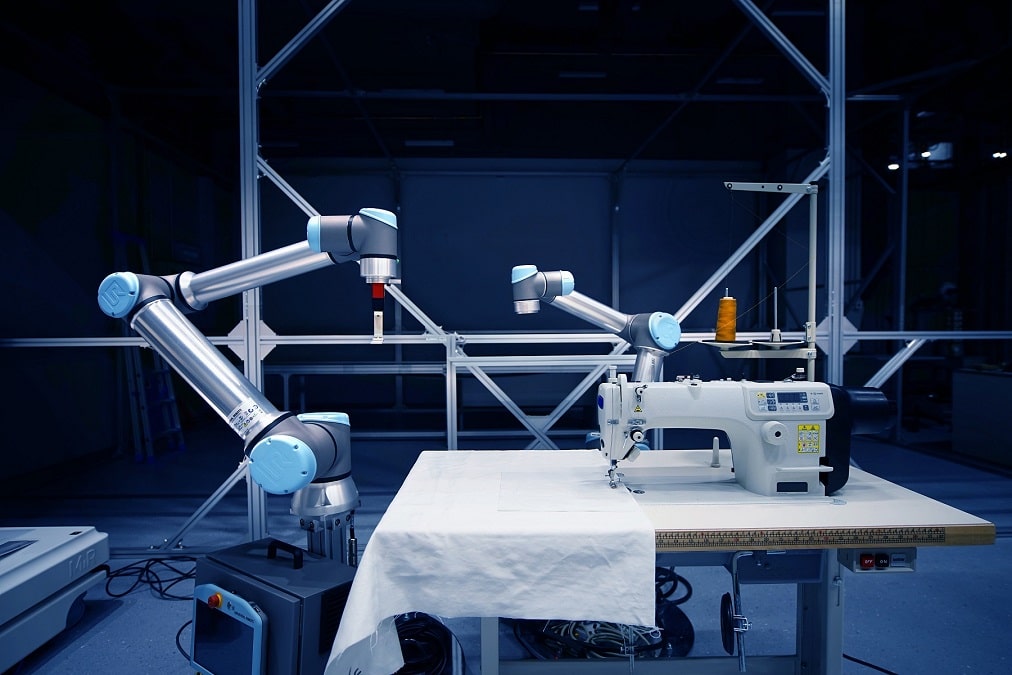What is a ‘mommy makeover’? Plastic surgeons explain the popular trend
[ad_1]

A “mommy makeover” can mean different things to different people, but generally speaking, they’re all more extreme than a swipe of red lipstick and swapping your Allbirds for a pair of heels. Plug the term into TikTok and you’ll find a barrage of before and after photos, post-op updates featuring compression girdles and the occasional walker and a slew of bikini selfies showing off tummies free of stretch marks, loose skin or any other tell-tale signs of childbirth.
According to a spokesperson from RealSelf, which features reviews of various aesthetic treatments, there’s been an 8% increase in searches of “mommy makeover” from 2020 to 2021, making it the site’s seventh-most researched procedure. Two procedures most commonly associated with a “mommy makeover,” meanwhile, are also the most-researched procedures, with breast augmentations and lifts showing a 19% increase in search interest and tummy tuck (or abdominoplasty) searches rising by 29%.
Dr. Shirley Madhère, a holistic plastic surgeon based in New York City, tells Yahoo Life that she’s seen an uptick in requests for “aesthetic enhancements” overall, something she attributes to people emerging from pandemic life and wanting a fresh look. These requests run the gamut from non-surgical treatments like fillers or skin resurfacing to more invasive procedures, including those that will help women “regain their pre-pregnancy shape.”
Just what does this “mommy makeover” entail? And what factors should a new mom consider before booking a consult with a cosmetic surgeon? Read on as experts break down everything from risks to recovery time.
So, what is a “mommy makeover”?
A “mommy makeover” generally refers to a combination of surgeries performed in a single session. Typically, these procedures center on the breasts, stomach and thighs, with tummy tucks, breast lifts and augmentations and liposuction being the most frequently requested. But pregnancy, childbirth and breastfeeding can affect women’s bodies in different ways, which is why Dr. Gaurav Bharti, a board-certified plastic surgeon in Charlotte, N.C., tells Yahoo Life that “there’s a big variety” in terms of what a “mommy makeover” involves from one woman to the next.
“Everybody is unique. So one ‘mommy makeover’ is not exactly the same as another one,” says Bharti, who calls the “mommy makeover” an “all-encompassing term that is predicated around the concept of getting a woman back to where she was before kids” — or to a figure that perhaps she never had in the first place.
Generally speaking, however, the abdominal area is “usually one of the chief concerns” for “mommy makeover” patients, Bharti notes, though the reasons behind that can vary: weight gain, loose skin, the so-called “C-section shelf” forming a pouch over the incision or diastasis recti, in which the abdominal muscles separate as a result of pregnancy. The latter can be treated with a diastasis recti repair surgery, while a tummy tuck can help restore separate muscles in addition to tightening the belly and removing excess fat and skin. A patient might also request a belly button lift (umbilicoplasty) or reshaping surgery to address “outies” that pop during pregnancy and don’t recede after birth.
Breasts are another main area of interest for “mommy makeovers.” Whether a mother breastfeeds, pumps or both, the process of the breasts regularly becoming engorged and then emptied can cause them to lose volume or droop. A patient may request a lift to offset that sagging (formally known as ptosis) and/or having volume added via implants or their own fat.
But it doesn’t necessarily stop there. “Typically breast and tummy is a very common combination,” says Bharti. “But now with the modern-day ‘mommy makeover,’ there’s other things.”
“Other things” could include liposuction, in which surgeons can “repurpose” any fat that’s removed — say, from the “muffin top” area along the waistline — and by using it to add volume and contour to the buttocks or hips. Madhère has seen requests for arm lifts and breast reductions, while Bharti has encountered head-to-toe transformations that could include anything from eyelid surgery and other facial nip/tucks to “vaginal rejuvenation,” such as a perineoplasty to tighten the vaginal entrance.
How soon after childbirth can a “mommy makeover” be performed?
Despite jokes about women going in for a C-section and coming out with a surgically enhanced body, the truth is that birthing bodies need time to heal. What’s more, it typically takes months — if not years, if breastfeeding and then weaning are involved — for a mother’s body to reach what Bharti calls a “baseline.” A uterus may simply need time, not outside intervention, to shrink back down. A nursing mother may see her baby weight melt away due to breastfeeding, only to return after weaning. Having surgery too soon, while the body is “still dynamically changing” on its own, also runs the risk of additional post-op weight loss and loose skin. As such, Bharti advises women to wait a “bare minimum” of three months postpartum before considering surgery to allow time for their body to settle, though six months is more typical.
“They need to absolutely get back to their recovered state,” he says. “After having a baby, your body’s going to go through dramatic changes. There’s going to be dramatic weight loss after having a baby, especially when women do breastfeed; you just shed pounds off. So you want to get to a steady state.”
Another factor to consider in terms of timing, Madhère adds, is that breast surgery “may affect breastfeeding.” Therefore, nursing mothers are typically advised to wait until they’ve weaned their babies.
In terms of future pregnancies, Bharti dismisses the theory that a woman can’t carry another child once she’s already had a tummy tuck. The body will adapt, he says, though he concedes that there is “unpredictably” on how a stomach that’s been tightened through surgery and then stretched through another pregnancy might respond. A woman may experience laxity, or looseness, in the abdominal area that could call for “repeat surgery,” though Bharti has also had patients who have gone on to have more kids after a tummy tuck without incident or additional intervention. Generally, however, he recommends his clients get their baby-making over with before committing to a “mommy makeover.”
“When I see patients, I say, ‘I want to make sure that you’re done having kids, not because you’re not going to be able to — because after you do it, if you do have another child there might be some changes that you may not like afterward, meaning you may need to have things tightened up or you might need to have something adjusted or revised,'” he says. “If you have a [reproductive] plan already in place, then I would execute on that plan before getting your abdominoplasty. But a lot of people don’t know what the future holds.”
What are the risks — and recovery time?
While “mommy makeovers” are often billed as a sort of convenient cosmetic combo, like any medical procedure, they come with risks. Among the factors that prospective patients should consider beforehand, Madhère says, are their overall health, how they respond to anesthesia, how long the procedure is, their mental mindset going in and any potential complications.
“A surgical session may be limited, in terms of the number of concomitant procedures), by the patient’s overall state of health as well as tolerance to prolonged anesthesia,” she says. “I have turned down requests for multiple procedures during one operative session, especially when the risk of blood loss is potentially high.”
The recovery time is another significant consideration, particularly for mothers with young children and a lack of childcare or other caretaker support to pitch in during the healing process. While recovery can vary depending on the procedure (how many, what type, how long) and the patient (their health, weight, lifestyle and pre-existing conditions), Madhère says that “in general, any one procedure may take up to eight weeks to heal and for the patient to resume full activity.”
“Generally, the greater the extent of surgery, the longer the recovery,” she adds. “Also, some operations require the avoidance of heavy lifting (more than 10 lbs.) for up to eight weeks after surgery. This may prevent a woman from carrying her child during that period of time.”
“Mommy makeover” recovery journeys documented on TikTok reveal the wide disparity in how some patients respond. Some are seen shuffling around for weeks in bandages and compression garments; others bounce back sooner and are flashing their flat tummies in crop tops and bikinis within days. Scroll through and you’ll also encounter women who have had botched procedures or struggle with pain and blood loss.
“We definitely want our patients up and walking the same evening of surgery,” says Bharti, who says his tummy tuck patients are kept overnight at an outpatient surgical facility. While any “hardcore” activity like working out or lifting heavy objects should be avoided, walking around and wearing compression garments help reduce the risk of developing blood clots. To start, that walking will involve being “bent over like a granny.”
What’s the appeal?
With all that new moms have to deal with — in a pandemic or out — do they need to add keeping up with society’s expectations of physical beauty to the list?
“The mounting pressures on women — to be perfect, to be every woman to everyone, to look a certain way, to uphold societal standards and more — seem to persist,” Madhère says, adding that she uses a “holistic approach that frames beauty from a wellness perspective” when meeting with prospective clients.
An initial consultation focuses on how someone can “re-self-identify” by having them answer questions that give insight into their mindset and motivations for wanting a new look. Among these questions: What makes you feel beautiful? What do you value most? What do you love about yourself? Would you love yourself more if [physical attribute] were to be enhanced? For whom are you undergoing this operation?
Bharti also stresses the importance of what he calls “aesthetic well-being,” something he says people are “much more attuned to” thanks in part to the pandemic. They want to not only feel their best; they want to look it, too.
“We’re in a period of investing in one’s self and achieving your own personal best, and I think that part of that is your aesthetic and functional and physical needs,” he says, adding, “I think there’s more to it than just, ‘Oh, here I need a tummy tuck.’ It’s deeper than that.”
Want lifestyle and wellness news delivered to your inbox? Sign up here for Yahoo Life’s newsletter.
[ad_2]
Source link







